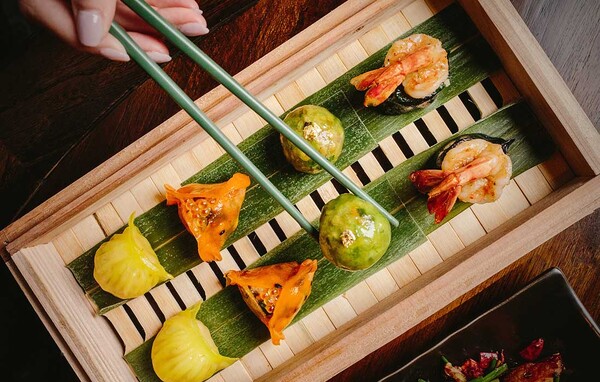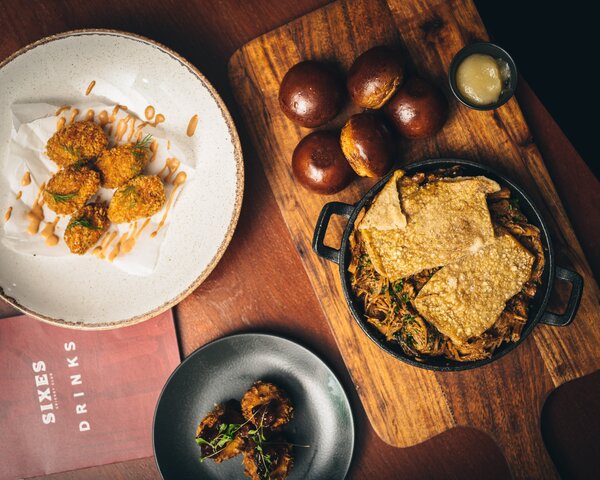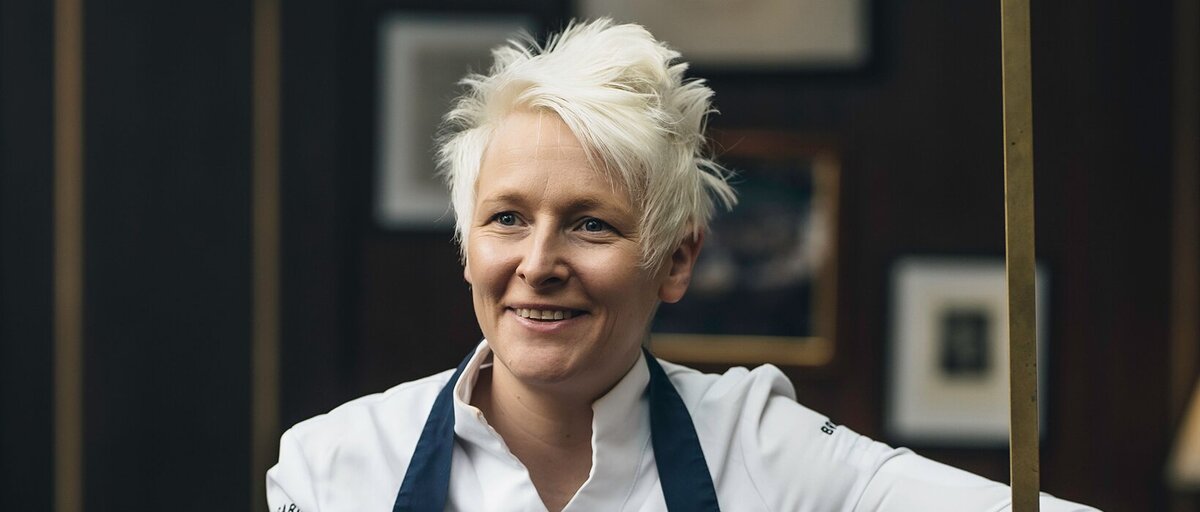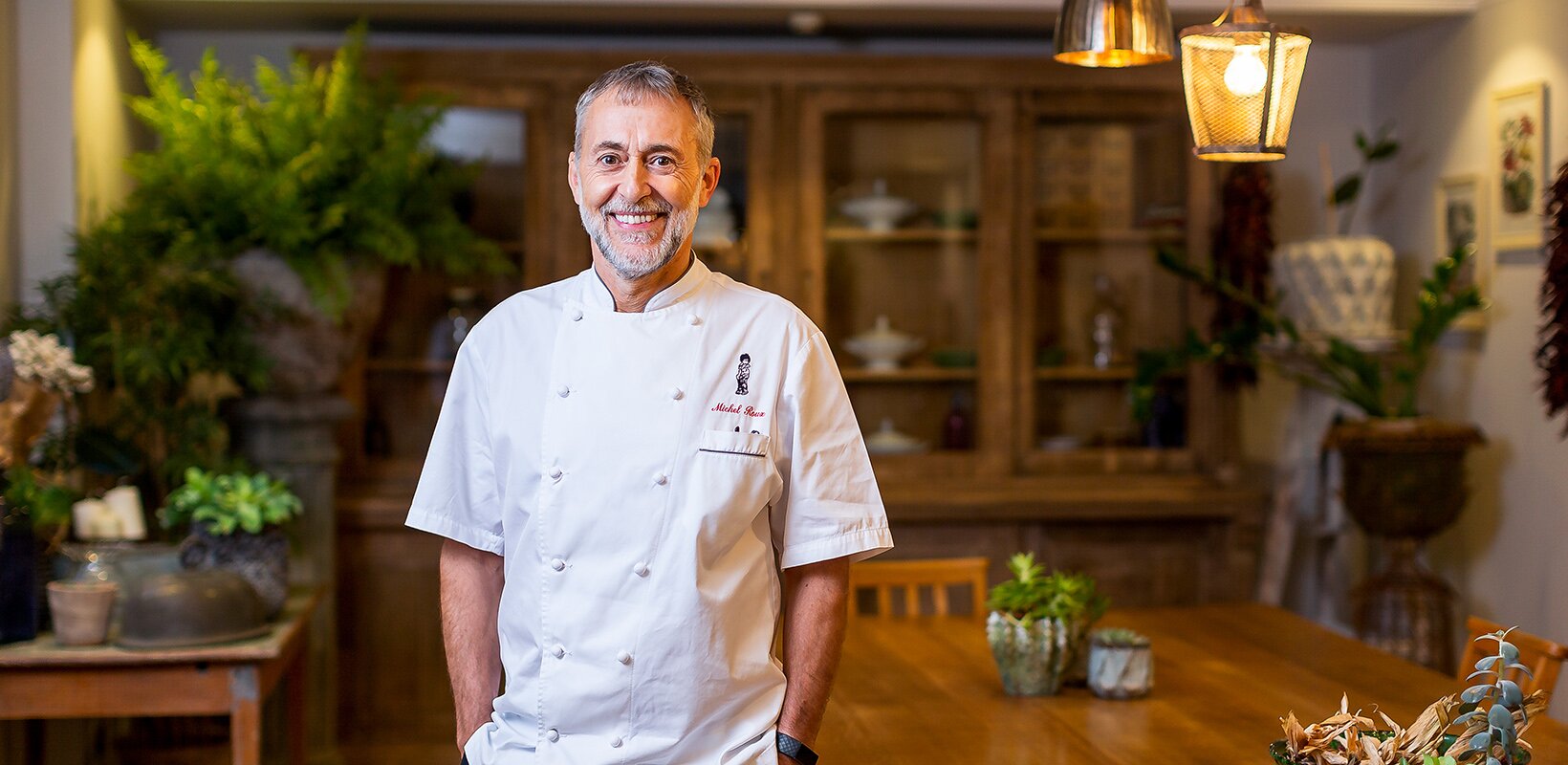Norse star
Oro opened about three years ago in the centre of Oslo, superbly located between the Norwegian parliament building and the royal palace. The 80-seat restaurant was financed by a group of private investors, confident that chef Terje Ness, having become a household name in Norway as a result of winning the Bocuse d'Or in 1999, would reap them lucrative rewards. So confident were they that they handed Ness a 35% share of the business without asking him to make any investment himself.
The investors' gamble on the venture - totalling NKr15m (about £1.4m) - was shrewd. Despite a downturn in the Norwegian economy and the worldwide drop in foreign tourist numbers, Oro has still established itself as one of the leading restaurants in Scandinavia. Such is its success that it has twice been extended, with a 40-seat tapas bar opening in September 2001 and a specialist food shop launched a few weeks ago.
When the Michelin guide awarded Oro a star just one year after opening - making it one of the fastest restaurants to receive such recognition - its position as one of the leading lights in Norwegian culinary culture was assured. Besides Oro, there are only four other Norwegian restaurants with a star, and only one - Bagatelle, where Ness spent five-and-a-half years as head chef - with two.
Ness acknowledges that winning the Bocuse d'Or was a major achievement that has allowed him to develop his career. His certificate is proudly displayed in the entrance of the restaurant, and the name "Oro" was selected because it's the Spanish word for gold. Today, Ness still cooks one of the dishes that helped him scoop the major accolade - a spit-roast pigeon with foie gras and sauce Marco Polo. "The pigeon will always be on the menu," he says.
Ness uses pigeon from Bresse and serves it with pan-fried foie gras, radicchio rosso and petits pois. The sauce Marco Polo, based on a pigeon jus, is flavoured with ginger, garlic, chilli, curry powder and cumin. "The dish was originally cooked for an international jury," he says, "so it was important that I used flavours that had a wide appeal. It was not enough just to use foie gras and truffles."
His second dish at the Bocuse d'Or, using saithe (also known as pollock or coley) and scallops, has never been cooked at Oro. "In Norway, saithe is a fish that you only use at home," he says. "It would never sell in a restaurant." His winning fish dish was a ballotine of saithe, stuffed with crab and served with scallops and a caviar and fennel sauce.
Born in the small town of Forde, north of Bergen on the west coast of Norway, Ness was inspired to cook as a child by his mother, who was a chef in a hospital, and his grandmother, "who taught me everything about traditional Norwegian cookery".
After working part-time cooking bacon and eggs in a bistro from the age of 11, at 16 Ness joined a school for chefs in his home town, which he describes as one of the best training grounds for chefs in Norway.
"I never take my apprentices from Oslo," he says. "I much prefer to take them from the west coast of Norway, as they tend to learn more about traditional Norwegian food there, whereas the young ones in Oslo have their heads turned by fast-food influences from abroad, such as McDonald's and pizza chains. To be a good chef, it's important to learn the traditional foods first - such as meatballs and good fish and chips."
After serving his apprenticeship in a tourist hotel in Forde, Ness spent some time cooking in a couple of ski resorts and then teaching at the Culinary Institute in Stavanger, before moving to Oslo to take up the post of head chef at Bagatelle.
It was at Bagatelle that he worked alongside a band of serious-minded chefs who introduced him to the country's leading culinary competitions. He went on to win the Norway Chef of the Year event in 1997 and 1998, and won success with the Norwegian culinary team from 1997 to 2001. The owner of Bagatelle, Eyvind Hellstrom, was fully behind Ness's entry in the Bocuse d'Or, becoming a leading sponsor alongside Norwegian Seafood. "He's the president of the Bocuse d'Or in Norway and Norway's representative on the jury in Lyons," Ness says.
It can't have come as much of a surprise to Hellstrom, though, that Ness should want to capitalise on his success on the international stage and open his own restaurant. And when he did so, he was determined to break away from the mould in which he had made his mark at Bagatelle. With a history reaching back to 1932, the food at Bagatelle is very firmly entrenched in the classical French kitchen. At Oro, however, Ness has created a menu that, while underpinned by a French classical approach, is inspired by a lighter touch more reflective of the Mediterranean flavours of Spain and Italy.
Like other Norwegian chefs, he has spent a lot of time abroad - in Denmark, Belgium, France and Spain - working and eating in order to improve and expand his repertoire.
His other major influence, of course, is the produce, with most of the fish and seafood coming from Norwegian waters, which Ness describes as "the best in the world". However, meat in Norway is not of such a high standard, except for game such as reindeer and venison. Most of Oro's fruit and vegetables are imported from France, Spain and Italy.
While a small à la carte menu is available, about 90% of customers choose from the daily-changing tasting menu, which costs NKr955 (£91.50) for 10 courses. It's inspired by the best Norwegian fish and seafood available each day, and includes just one meat course, a cheese course, a couple of desserts, and a selection of petits fours.
The food itself is sensational. On the evening when Caterer visited Oro, photographer Sam Bailey and I began with a large white plate, on which was placed a spoonful of sweetly flavoured crab meat combined with fresh herbs and a vinagrette, a small shot glass of gazpacho granité, and a dish of wild smoked salmon topped with a wild caper and a drizzle of a broccoli and cauliflower cream. Not only was the presentation stunning, the flavours of each individual component were precise, and together produced a superb start to the meal.
To follow, there was a terrine of foie gras, accompanied by sweet tomato concasse and a shot glass of rhubarb soup, the refreshing flavour of the rhubarb proving a perfect foil to the richness of the foie gras.
The next course was a perfect example of a consistent theme throughout the meal - prime ingredients cooked to perfection. Exceptional sweet scallops from Stavanger were cooked so that a hint of translucence remained apparent, and were served with an oyster coulis on a bed of saut‚d cabbage spiked with herbs and a hint of chilli.
Peppered tuna was served next, seared on the outside while still juicy in the middle. It was accompanied by a quail's egg, haricot vert and black olives, with a garlic emulsion.
Next came some skate, served on a bed of carrots and artichoke, accompanied by what I at first thought an odd choice - an almond froth. But it proved to be an inspiring combination, with a tangy hint of lemon beurre blanc perfectly balancing the creamy, almond liquid.
A mojito granité (made from rum, soda, lime juice, sugar syrup and fresh mint) restarted the palate before we reached the solitary meat course - spring chicken served with creamed port wine morels, Norwegian asparagus, garlic potato pur‚e and a tarragon sauce.
The cheese course included a chèvre from Burgundy and a comté, accompanied by a compote of figs and nuts, bruscetta Toscana and some Danish rye and seed bread.
Although by this time we had worked our way through eight courses, each dish had been so perfectly balanced that I was still looking forward to the two desserts that were to follow - a tangy fresh mango compote topped with a lime foam, followed by a beautifully intense chocolate ganache, made from white, milk and dark chocolate, served with a vanilla sorbet, strawberries and a fine shaving of pistachios.
To round off the meal, coffee was served with petits fours which included a Catalan foam (a whizzed-up version of crème brûlée), some cubes of apricot and raspberry jelly, a sticky chocolate praline lollipop, and some delectable chocolate truffles.
Dining at Oro was an amazing experience, in full view of the open kitchen, with as many as 14 chefs at work both there and in the preparation kitchen in the basement. Service that was attentive but not stuffy completed a serious gastronomic experience.
Norway and the world culinary stage
For a country with a population of only 4.5 million, Norway has achieved remarkable culinary success on the international stage. While its most impressive achievements have come in the biennial Bocuse d'Or competition, it has also achieved results to be proud of in the Culinary Olympics, held every four years. Norway was the only country to finish in the top three of the Culinary Olympics in 1996 and 2000.
However, it is at the Bocuse d'Or, the razzmatazz event attended by some 24 nations and which is officially known as the World Cuisine Competition, that Norway has really made its mark. The competition was founded by a Frenchman (Paul Bocuse), is always held in France (in Lyons), and was expected by the French to be dominated by French successes. But, of the nine competitions staged since its inauguration in 1987, France has won only four, and Norway three, with one each for Luxembourg and Sweden.
Bent Stiansen was the first winner for Norway in 1993, followed by Terje Ness in 1999, then Charles Tjessem earlier this year. Norway has also taken the silver and bronze awards at the Bocuse d'Or on two occasions.
So what has enabled Norwegian chefs to shine so spectacularly? Some might say the fact that Norwegian Seafood has been a major sponsor of the competition for several years is undoubtedly a major factor. The company provided the saithe and scallops when Ness won in 1999, and the fjord trout which Tjessem used for one of his two winning dishes in January 2003.
Using Norwegian products perhaps gave Ness and Tjessem a head start over the other competitors in their understanding of how the fish and seafood are best prepared and served. However, what matters is the chef who delivers the goods on the day of the competition, under intense scrutiny.
Perhaps more important is the fact that the Norwegian entrants are able to secure substantial finance. Ness says that, while his total sponsorship for the event amounted to NKr150,000 (£14,400), Tjessem received NKr2.5m (£240,000). Tjessem was also given an enormous boost in morale from the 500 or so supporters who accompanied him to Lyons. By comparison, the British entrant this year, Eyck Zimmer, had sponsorship of only £4,000, and only about 10 supporters in the crowd.
Referring to the fact that Norwegian Seafood will not be one of the official sponsors of the Bocuse d'Or in 2005, Ness says: "It's going to be more difficult for the Norwegian candidate, Tom Victor Gausdal, to do well in 2005. Sponsorship is going to be harder to raise and, with less money behind you, you stand less chance of winning."
Money aside, there are additional factors that have contributed to Norway's success. Although the country's population is small and, as a result, it has only a small number of chefs to draw on, this actually works in its favour.
"We're a very close group of chefs here in Norway," Ness says. "We have no egos and are always keen to help one another, particularly when it comes to preparing for a competition. It's very different in countries like France, where everyone wants to be top dog all the time. That's why France hasn't got a strong culinary team, whereas we do."
Finally, the fact that chefs' training in Norway is a very structured affair has helped individuals to approach competitions in a highly focused way. Kjetil Gundersen of the Culinary Institute of Norway explains that all chefs will go to catering college at the age of 15 or 16, for two years. He adds: "They will then move on to a two-year apprenticeship in industry - it may be a restaurant, a hotel or a catering company - before then moving on to a new position as a qualified chef."
The approach to training, and the professional career pattern for Norwegian chefs, is highlighted by the fact that the average salary for a chef de partie is about £25,000.















